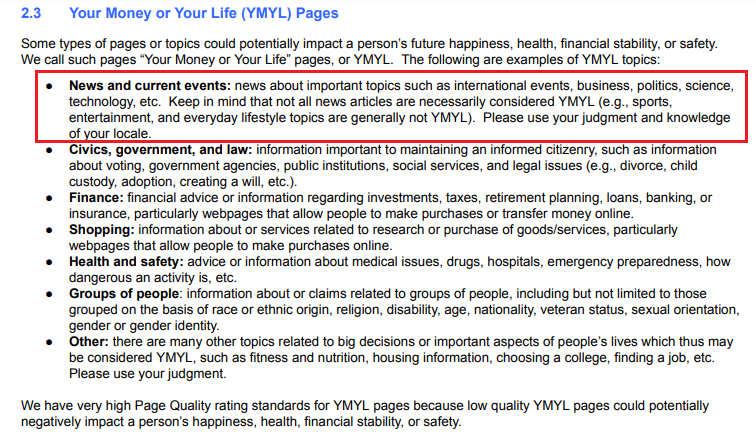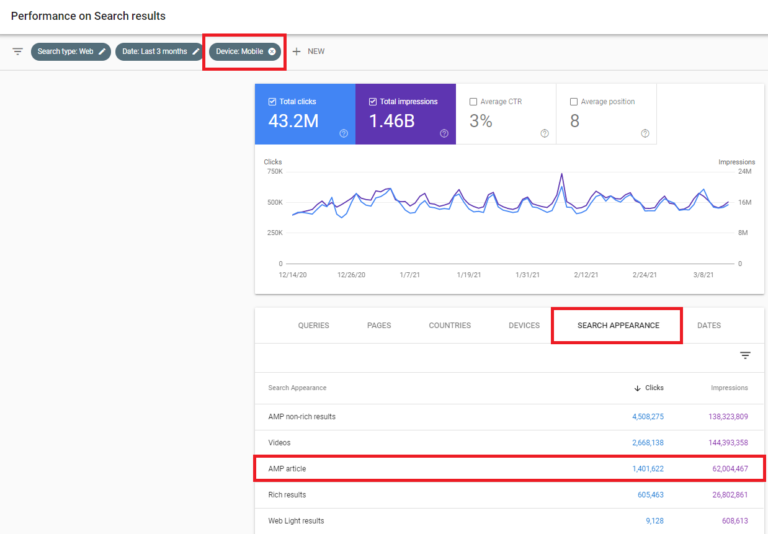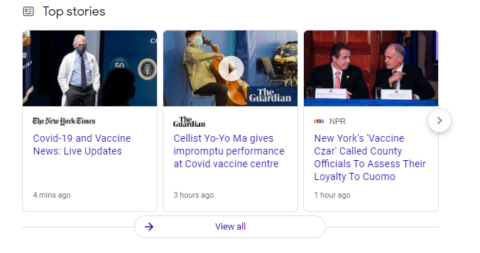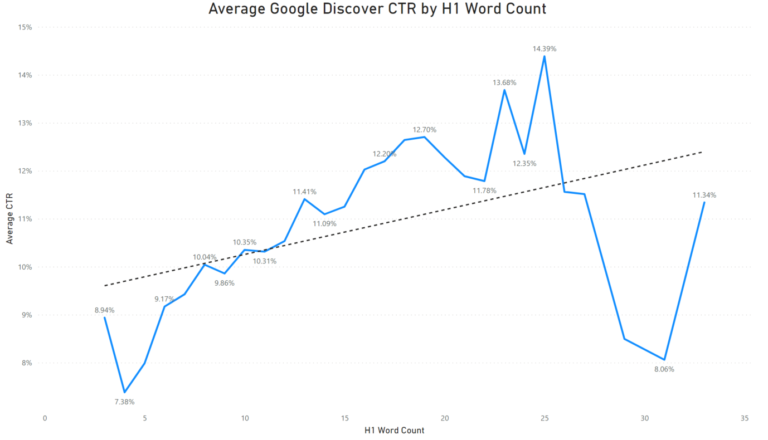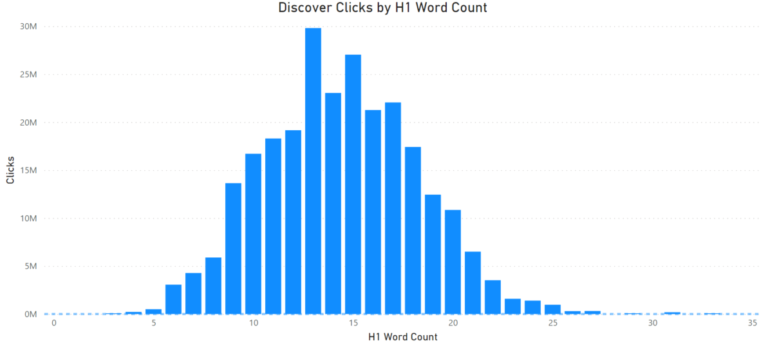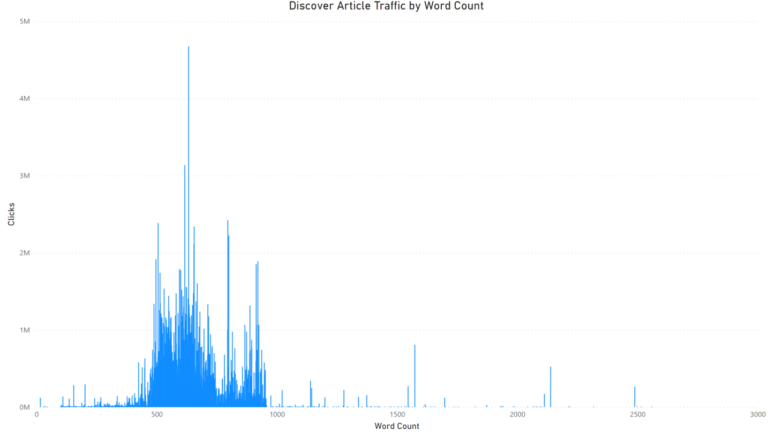How to optimize articles for News, Discover and Top Stories on Google
Each month, through its platforms, Google sends over 24 billion free visits to the sites of publishers all around the world, allowing them to monetize through online advertising and subscriptions, or to sell their advertising space to millions of advertisers. In short, the publishing sector can significantly benefit from the visibility offered by Google products, but it is not only the websites of newspapers that are classically intended to achieve this goal: Much of the recent or interesting content can in fact be shown on one of Google’s different organic SERP features, each of which requires a specific optimization work to increase our chances.
Google’s different products for news
Going beyond the classic 10 blue links of organic search and also counter the decrease in organic clicks – certified even by some studies, not without controversies: the Google features providing current content, news or editorial insights can really become an important source of organic traffic for sites.
But the optimization of content to increase the chances of them appearing in Google News, Top Stories and Google Discover is unique and in many respects different from the traditional process of acquiring rankings in the 10 organic blue links of the SERP, and also “Google uses a variety of different organic SERP features to showcase recent or interesting content, each of which includes its own set of classification guidelines and reporting capabilities,” explains Lily Ray on Search Engine Journal.
To complicate the situation even more is the fact that “Google only provides dedicated reports on some, but not all, these features related to news via Google Search Console and Google Analytics”, leaving then “some mystery about where exactly in search results a certain article could generate traffic and impressions“.
The difficulties of optimizing content for Google products
Another critical element is that Google offers guidelines and advice on how to appear in Google News or Discover, as well as tips to manage the news site; however, often such documents are of technical nature and, for example, focus on technical guidance to prevent content from being indexed to Google News without affecting performance in normal search.
What is missing, in short, is an overview on how to structure and optimize the best content for performance in Google News or Discover, which is precisely the goal of the article by Lily Ray, that helps us to learn about the various features of Google’s SERP that show recent news or trend, giving us suggestions on how to optimize them and generate reports to analyze the performance of content, so as to see what works and what does not.
The work on Google News
Google News is a news aggregator available both as a mobile app and by visiting news.google.com in the browser.
Historically, publishers had to manually send their sites for approval in Google News via the Google Publishers Center and the approval process was notoriously difficult, but since December 2019 the documentation has slightly changed and now the need to apply has been abolished. Now, as we read in Google’s documentation, all it takes to appear in Google News is to “produce high-quality content and comply with Google News content regulations”.
How to appear in Google News
Basically, we seem to understand that technically it is possible that the contents of any site are displayed in Google News, but this does not often happen for most sites. However, Ray warns against this simplistic reading, because “regardless of the frequency with which a site produces content, Google is strict in its criteria for publishers to view in Google News”.
Specifically, as stated in most of its documentation, news sites must demonstrate a good degree of EAT – competence, authoritativeness and reliability. It is no coincidence that in the Google Search Quality Rater Guidelines (last updated in October 2020), the content definition “YMYL – Your Money, Your Life” begins with “News and current events” as the first example of the type of site that can affect happiness, the health financial stability or safety of a person.
Content criteria on Google News
This element probably indicates that “the criteria used to evaluate content and websites for Google News could be subject to a greater control of the parameters EAT compared to that of other areas of Google Search”, explains the author, according to which this “would align with other articles and videos published in recent years, which confirm that Google increases its focus on the authoritativeness of publishers when it comes to breaking news, disinformation, elections and times of crisis”.
Two other features that Google claims to promote in classifying news content are “uniqueness” and a “diversity of views“. As early as the end of 2019, Google had announced its intention to give more importance to original reports in the news content rankings, with the aim of providing higher rankings for “the story that started it all”.
In particular, these contents have special privileges, informed Google, how to stay “longer in a clearly visible position to allow users to view the original reports and, at the same time, look at the latest articles for further insights on the subject”. For those who want to compete and position themselves on News, this recommendation cannot be overlooked.
An example of the effect of original reports and content in syndication
There are numerous sites and aggregators that distribute mainly content from sources such as Reuters or Associated Press, which may have suffered a decline in organic visibility in recent years due to this problem. In the article, Ray shows the graph of the loss of SEO visibility of one of these aggregator sites (the blue letters indicate Google Core Updates).
While it is not uncommon for syndicated content to drive traffic, to achieve long-term sustainable performance in Google News you need to differentiate our content by providing original reports or by offering a unique angle that is not found on other sites.
In fact, Google advises not to index content in Syndication Content or distributed on other sites, but in reality this type of content often directs significant organic traffic to many publishers, who then choose to index it.
Tips to optimize content for Google News
From a practical point of view, Google offers some advice on the criteria for the placement of content in Google News, including mentions to:
- Relevance.
- Prominence.
- Authoritativeness.
- Freshness.
- Position.
- Language.
The key is however a timely publication, because – unlike traditional research, where the time factor is more attenuated and depends on the query – in Google News speed is essential.
This is particularly true if you experience a breaking news event: the sites that publish this latest news quickly will be the first to start accumulating links and shares on social media, which will only boost their performance on Google News.
The use of Newsarticle structured data and News XML Sitemaps are also technical requirements for the inclusion in Google News.
Google Publisher Center
Google offers a Publisher Center to the news publishers that can be used to manage the information of their organization, such as general information about the organization, categories are included in the site, official brand logos, feeds and more.
If positioning in Google News is our goal, we should “absolutely use the Editors Center to check out important brand information,” Ray recommends.
Visibility in Google News
Lily Ray also performed an analysis on the pages shown on Google News, revealing that – while aiming to show a variety of views and not tilt towards the ends of the political spectrum – in recent years have dominated highly authoritative publications, while many marginal publications seem to have lost visibility.
In particular, the ranking of the 100 websites with the highest traffic in “News and Media” sees at the top powerful editorial publications such as nytimes.com, usnews.com, theguardian.com, cnn.com and yahoo.com, and already this is an indication of what Google identifies as “authority” in the news, to which Ray recommends to be inspired to “determine how to structure titles, subtitles, Urls, taxonomy, internal links and other important considerations for positioning in Google News”.
How to analyze traffic from Google News
Google News traffic can be detected via Google Analytics and Search Console: in the first case, it will be displayed under the reference source news.google.com, while in the Google Search Console recently was introduced a report on dedicated performance for Google News traffic in the Google News tab of the left sidebar.
By combining these two sources we can “get a more in-depth view of the data, such as the display of click percentages for article titles in Google News (adding the page title as a secondary dimension in Google Analytics)”.
Top Stories on Google
For news publishers, Google Top Stories carousel is a gold mine of organic traffic. According to Richard Nazarewicz, Technical SEO Manager of the Wall Street Journal, “it is the most coveted place for fresh or last-minute news emerging in the Google Search ecosystem”.
Nazarewicz reveals that every editorial staff “Work hard with your SEO editors or with the SEO desk, if you have one, to optimize using Google Trends, competition analysis and A/B testing on the SEO title to ensure that your article is displayed among the top 3 stories“. From a technical point of view, we recommend to treat these articles as other relevant content of the site, and in particular to “link these articles from a prominent position like the home page and include them in a sitemap dedicated to fresh news or breaking news for at least 48/72 hours before moving them to a sitemap archive of regular articles, depending on the configuration”.
Top Stories and AMP
As we know, with the Google Page Experience update soon among the main news on mobile devices will no longer be allowed only AMP pages, and therefore potentially any article of any site can appear in this carousel.
However, Ray says, “if major publishers continue to use AMP, this will make it difficult for non-amp publishers to compete with the very fast loading times of their articles”.
How to analyze traffic from Top Stories
For now, the main news carousel does not have a section dedicated to reports in the Google Search Console or in Analytics.
Lily Ray indicates a way to get approximate performance data from this section, namely by accessing the Appearance tab in the Search Console search, filtering based on a mobile device and selecting the AMP article. It is not a “perfect method, since it is still possible that AMP articles are displayed in other areas of Google”, but it can “act as a representative set of clicks and impressions from Top Stories (and other places)”.
According to the author, it may be useful to switch to this view after starting AMP, to see if the articles are gaining popularity in the headlines.
Top Stories ranking tips
In order to rank in in Top Stories, one of the most important ranking factors is the use of keywords in titles.
Unlike Google’s standard organic blue links, which display the title element> as the title of the ranking page, Top Stories shows the <h1> title as the main title of the page.
It is therefore important to focus on optimizing the title of the article, for example by ensuring that the name of the target entity (person, place or object you write about) is clearly stated and at the beginning of the title. Like other general advice, the headlines of articles should generally remain below 22 words for optimal performance; in addition, we must logically avoid swearing, excessively clickbait texts or anything inappropriate or unclear in the headlines of the articles.
Optimization for Google Discover
Google Discover is the custom feed of articles, available to users via Android mobile devices or the Google app on iOS; you can also sign in to Google Discover by visiting the Google.com home page while you are logged into a Google account on a mobile device using Google Chrome.
To make Google Discover unique compared to other search areas is the fact that “the list of articles is edited before the user types in anything, using other user behaviors on Google to determine what the user might find interesting”.
Therefore, a user who “frequents dog publications, or maybe shares dog articles on social media or uses dog-related apps on their phone may be more likely to see dog content appearing in Discover feeds”.
How to take care of content for Discover
Content may be suitable for publication on Discover without using specific structured data or Sitemaps.
One of the most relevant technical elements for Discover optimization is to provide “an attractive and high quality image“, at least 1,200 px wide and enabled by the <meta name = “robots” content = “max-image-preview: large”> meta tag or using AMP.
Google Discover guidelines recommend focusing on “timely content for current interests, which tells a story well or provides unique insights”, to “Avoid clickbait titles” and provide “clear dates, subtitles, information about authors, publication, publisher, company or network behind and contact information”.
Moreover, the system may not show certain types of content “undesirable or that could confuse readers”, such as Work Questions, Petitions, Forms, Code Archives, Satirical Content without any context”.
And is Richard Nazarewicz, again, to reveal that traffic from Discover “tends to reach on average about 20-40% of all Google traffic (GSC), while in Europe it is closer to 40-60%”. This depends on the fact that in Europe and the Middle East “Android has a much higher percentage of the mobile market, compared to the United States, where we mainly use the Apple iPhone”.
Considerations on content in Discover
In order to provide guidance on how to optimize content for Google Discover, Lily Ray analyzed over 5,000 Urls placed in Google Discover on a variety of Path Interactive clients over the past year, formulating some general considerations on the system – similar in content to those highlighted by the guide to Google Discover made by Abby Hamilton last year.
In particular, it emerges that:
- Articles with excellent performance in Google Discover tend to be very funny and evoke strong emotions, without being too clickbait nor “satisfy morbid curiosity, excitement or indignation” (which are negative features that can result in a manual action by Google).
- Not all pages classified in Google Discover are news or blog articles, but you will also find examples of local service pages or other local resources that receive significant traffic from Google Discover.
- Articles that date back several years can reappear in Google Discover, even without changes.
- Apparently, websites marked as “adult” content may not be eligible for Google Discover. Google’s Discover documentation states that content containing “nudity, sexual acts, sexually allusive activity, or sexually explicit material” violates content guidelines and may prevent publishers from appearing in the feed.
How articles are optimized on Discover, the study by Path Interactive
Analyzing the performance of a sample of Path Interactive customers with articles placed in Discover, Lily Ray shared a series of correlations observed with respect to the level and type of optimizations and features present in such content.
We talk about correlation and not causality (as often happens in the SEO field), but in any case “trends can shed light on some insights about which contents tend to have a good performance in Discover”.
Data on the length of titles
In Google Discover, the article’s <H1> title is often (but not always) displayed as the article’s title: therefore, the length of the title could potentially affect CTRs.
In fact, the analysis shows that there is a positive correlation “between the word count of H1 and the increase of the CTR, up to about 27 words, where the CTR drops drastically”. The strongest CTR (14.39%) was found on articles that use 25 words in the headlines.
According to these data, writing a headline of about 15-25 words could be a good goal for Google Discover. The same general pattern also works for Discover’s overall content clicks, “although articles with higher traffic had even shorter headlines, between about 10-20 words”.
Data on the length of articles
Analyzing the overall length of the content, the articles that received the most traffic in Google Discover “ranged around 500-1,000 words in length, with the best performance in the 600-700 word count range”.
Lily Ray reiterates that “word count is not a ranking factor in any Google search feature, but we thought the trend was still interesting to observe specifically on Discover”.
Final considerations on content for Discover
These correlations on numbers should not lose sight of the priority approach to content creation, namely “focusing on the quality of the content and angaging users”, which is also optimal to appear in Discover.
Ultimately, admits Lily Ray, only the analysis of their data on the performance of content in the Google feature (available in Search Console) allows you to really find out what are the patterns of articles and topics that tend to rank well for our site, so as to attempt to replicate them and expand our success in Discover.
One last tip concerns the use of the Web Stories feature, the visual news that have a featured space on Google Discover and are proving to be “an excellent source of traffic and a good way to stay ahead of the competition”.


